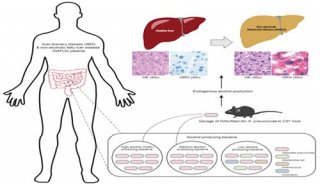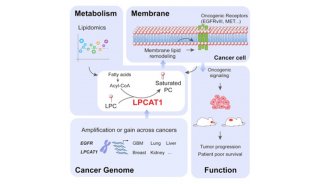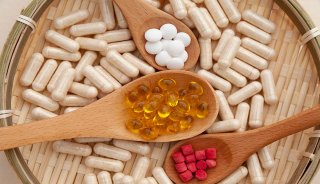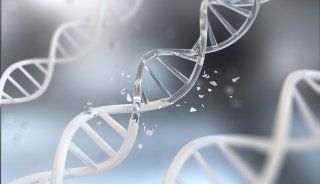Eicosanoid Metabolism

The eicosanoids are a family of lipophilic hormones derived from the twenty carbon fatty acid arachidonic acid. Although they are diverse in structure, many eicosanoids have roles in inflammation, including regulation of vasodilation, vascular permeability, pain, and recruitment of leukocytes. Most members of this family are rapidly metabolized near their site of synthesis, so they act locally on neighboring cells, not distant parts of the body. They are also not stored in cells, but synthesized rapidly in response to stimuli, making regulation of their synthesis a key to their activity. Many drugs act through modulating the production of eicosanoids or modulating their signaling pathways. Hormones in the eicosanoid family include the prostaglandins, thromboxanes, leukotrienes, and prostacyclins. The first step in the production of eicosanoids is the release of arachidonic acid from either diacylglycerol or phospholipids by membrane bound phospholipases in response to extracellular stimuli. Arachidonic acid has several possible fates, including oxygenation by lipoxygenases to make HPETEs (hydroperoxy-eicosatetraenoic acids), or production of prostaglandin H2 by PGH2 synthase. 5-lipoxygenase acts with the membrane bound protein FLAP (five lipoxygenase activating protein) to produce the epoxide leukotriene LTA4 which is hydrolyzed to produce LTB4 or has glutathione added by a glutathione S-transferase to produce LTC4 and LTD4. A G-protein coupled receptor for LTD4, CysLT1, mediates an important component of the inflammatory response of leukotrienes on airway constriction and recruitment of leukocytes, and several marketed asthma drugs act as antagonists of the CysLT1 receptor. PGH2 synthase actually consists of two enzyme components, a cyclooxygenase and a peroxidase, and there are more than one type of cycloxygenase, including Cox-1 and Cox-2. Recent NSAIDS acting selectively as Cox-2 inhibitors like Vioxx are widely used for the treatment of arthritis and other inflammatory conditions, inhibiting the production of downstream thromboxanes and prostaglandins. PGH2 also has several possible fates, including conversion by thromboxane synthase to Tpx2, an eicosinoid with potent coagulation and vasoconstriction activity. PGI2, or prostacyclin, synthesized by prostacyclin synthase, has properties opposite those of thromboxane, causing vasodilation and a reduction in clotting through the IP receptor, causing thromboxanes and PGI2 to act in opposition to each other. Thromboxane antagonists and prostacyclin agonists both provide tools and drugs to reduce vasoconstriction. The prostaglandins include PGD2, PGE2 and PGF2, with varying degrees of selectivity among their receptors, DP, EP and FP, respectively. PGE2 exerts biological effects including induction of pain, fever and vasodilation through at least four receptors, EP1, EP2, EP3 and EP4, and EP3 is found in multiple splice variants. The diversity of the eicosanoids and their receptors and their involvement in many disease states makes it likely that this pathway will continue as a major research focus.
Contributor: Glenn Croston, PhD
REFERENCES: Dogne JM et al. Therapeutic potential of thromboxane inhibitors in asthma. Expert Opin Investig Drugs. 2002 Feb;11(2):275-81. Fitzpatrick FA, Soberman R. Regulated formation of eicosanoids. J Clin Invest. 2001 Jun;107(11):1347-51. Hui Y, Funk CD. Cysteinyl leukotriene receptors. Biochem Pharmacol. 2002 Dec 1;64(11):1549-57. Radmark OP. The molecular biology and regulation of 5-lipoxygenase. Am J Respir Crit Care Med. 2000 Feb;161(2 Pt 2):S11-5. Smyth EM, FitzGerald GA. Human prostacyclin receptor. Vitam Horm. 2002;65:149-65. Soberman RJ, Christmas P. The organization and consequences of eicosanoid signaling. J Clin Invest. 2003 Apr;111(8):1107-13. Tilley SL et al. Mixed messages: modulation of inflammation and immune responses by prostaglandins and thromboxanes. J Clin Invest. 2001 Jul;108(1):15-23.
-
项目成果

-
项目成果

-
科技前沿



















